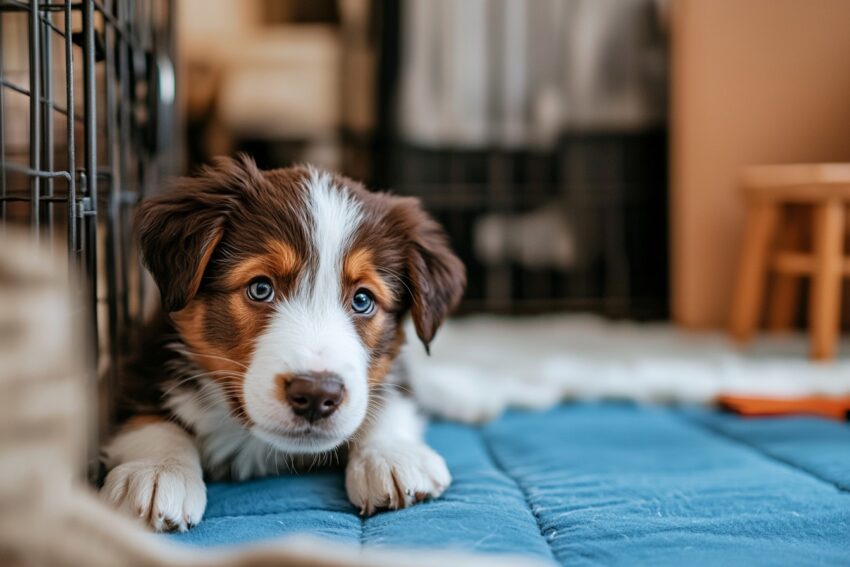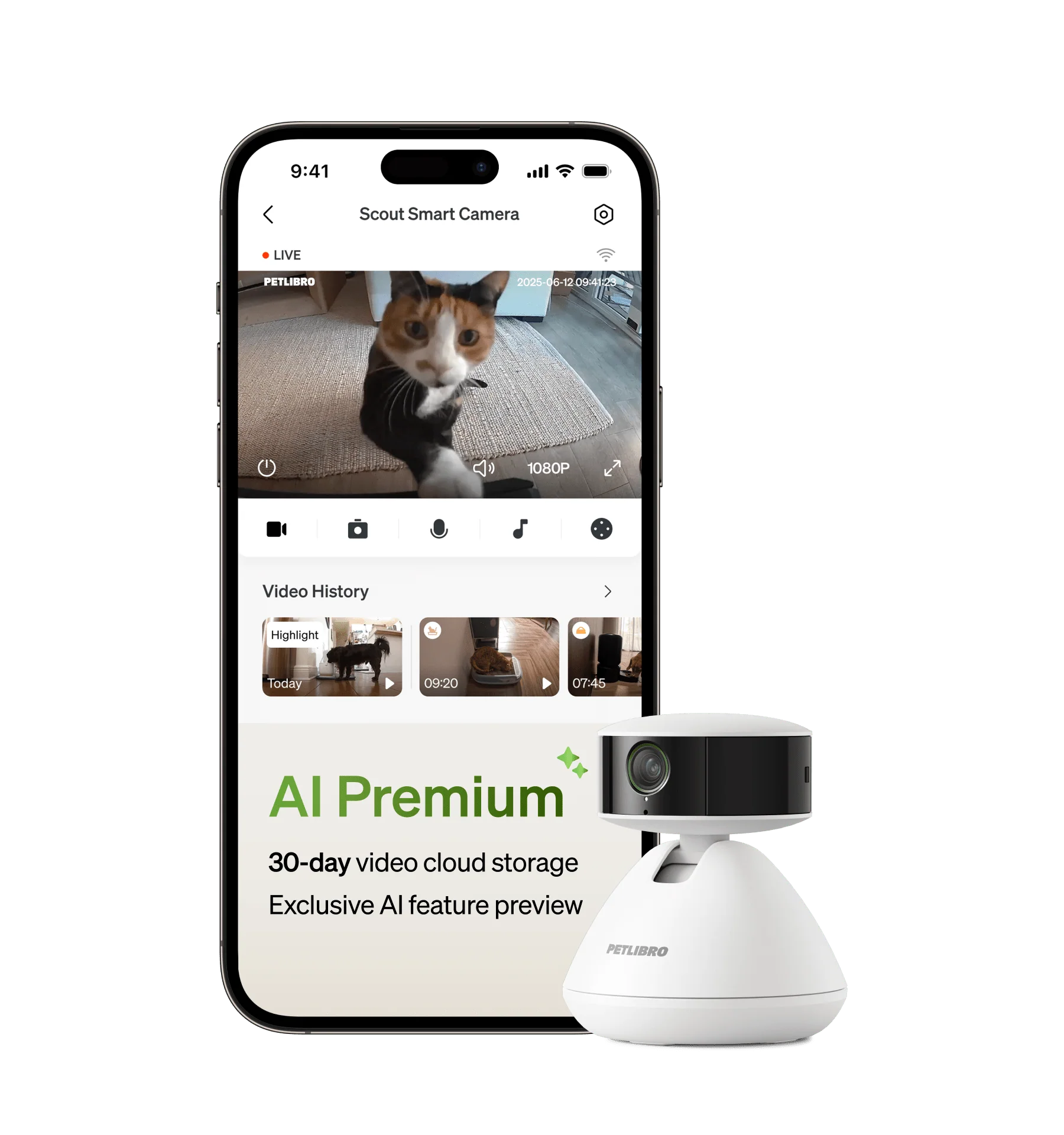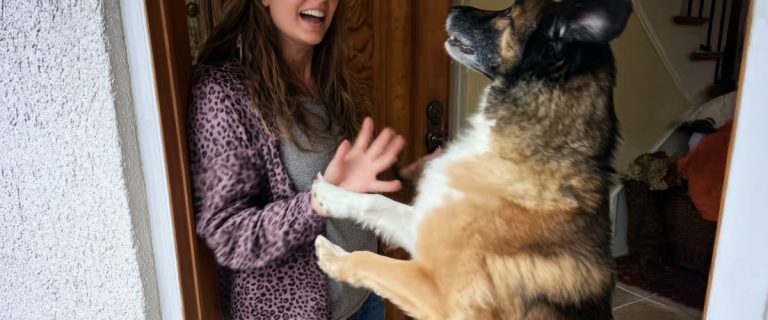Bringing home a new puppy while working full-time can feel like juggling fire with oven mitts. You’re excited—but also low-key panicking about how to meet their needs when you’re gone all day.
The truth? You can make it work, even with a 9-to-5 (or longer), but it takes planning, patience, and a little creativity. This guide gives you real strategies to keep your pup safe, happy, and on track while you’re clocked in.
Before we dive in, here’s a quick look at what matters most:
TL;DR — Working Full-Time With a Puppy? Here's How to Make It Work
- 🕒 Start with time off: Give your pup at least a couple days to settle in and bond.
- 🚫 Skip the all-day crate: Use a puppy-safe zone that allows room to move.
- 🎾 Boredom = destruction: Keep them entertained with toys and chewables.
- 👥 Call in reinforcements: A walker, sitter, or kind neighbor makes a huge difference.
- 📹 Smart tech saves sanity: Puppy cams and auto-feeders help you monitor and manage from afar.
💡 Why it’s worth your scroll: These tips help you balance a busy job with raising a happy, well-adjusted puppy—without burning out.
Take a Few Days Off (Yes, Really!)
Your puppy’s first few days home are make-or-break. This is when trust begins, routines form, and anxiety either builds—or dissolves.
Imagine it from their point of view: One day you’re with your mom and siblings. The next? Total strangers, new smells, and no idea what’s going on.
That’s why taking a few days off isn’t indulgent—it’s essential. Here’s why it matters:
- Helps reduce fear and confusion: Your pup gets to learn your scent, voice, and vibe while you’re consistently around.
- Builds early routines: Feeding, potty, naps—you help set the rhythm.
- Boosts emotional bonding: Puppies thrive on attachment and reassurance.
- Minimizes early damage: You’re there to supervise, redirect, and protect your stuff.
Even if full time off isn’t possible… Try bringing your pup home right before a weekend or string together a day off with a weekend. Every extra hour matters.
Too bad they don’t offer puppy parental leave, huh?
Planning to share your new pup with the world?
Get inspired with creative and adorable ways to announce your furry family member: 10 New Puppy Announcement Ideas.
Create a Safe Puppy Zone (Beyond Just Crates)
How to Set Up a Puppy Zone:
- Use a playpen or baby gate to block off a small, secure area.
- Line the floor with pee pads or waterproof mats—accidents will happen.
- Add enrichment: chew toys, a soft bed, and maybe a stuffed Kong for long-lasting distraction.
- Hide cords and elevate valuables. Puppies will explore with their teeth.
Pro Tip
Rotate toys every day or two so things stay exciting.
Enrichment Is Everything
A bored puppy is a destructive puppy. And when you’re gone all day, their brain still needs stimulation—or they’ll find their own (like eating your shoes).
Enrichment isn’t just about fun—it’s essential for mental health, behavior, and confidence.
Easy Enrichment Ideas That Work While You’re Away:
- Puzzle feeders or treat-dispensing balls that keep them mentally engaged
- Frozen Kongs stuffed with peanut butter, yogurt, or mashed banana
- Rotating toy boxes so old toys feel new again
- Safe chewables (rubber toys, puppy teething sticks, etc.)
- Dog-safe background noise like calming music or pet-friendly YouTube videos
Pro Tip
Don’t give them everything at once. Introduce a couple things in the morning and leave one “surprise” for later in the day.
When you enrich their world, even from a distance, you’re teaching them how to self-soothe, stay calm, and stay out of trouble.

Get Tech on Your Side
Working all day doesn’t mean you have to feel disconnected.
Smart pet tech has come a long way—and it’s made for busy dog parents just like you.
Here are some tools worth adding to your puppy toolkit:
Pet Cams (like Furbo or Eufy)
Pet cams are more than just fun gadgets—they’re a lifeline for busy pet parents. With two-way audio, you can reassure your pup (or tell them to get off the couch), and some even toss treats on command. Having the ability to check in during the day gives you peace of mind, while also helping reduce your dog’s anxiety since they can hear your voice. These cameras also capture adorable candid moments you’d otherwise miss.
Want a camera that does more than watch?
Check out our roundup of the best dog cameras that let you toss treats, talk to your pup, and keep tails wagging even when you’re not home: Best Treat-Dispensing Dog Cameras.
Automatic Feeders for Precise Meal Timing
Automatic feeders take the stress out of unpredictable schedules. Whether your lunch meeting runs late or traffic keeps you from getting home on time, your dog (or cat) won’t miss a meal. Many smart feeders even let you portion out exact amounts, schedule multiple feedings, and monitor eating habits through an app. This helps with weight management, especially if your pet is on a strict diet.
With a 24-cup capacity, you won't have to refill the feeder after every meal. This pet feeder can dispense dry and semi-moist pet food thanks to the unique design of the conveyor that helps prevent food jams. This feeder also has low and empty food sensors, which will notify your smartphone when the pet feeder is running low or out of kibble. The Smart Feed Automatic Pet Feeder is compatible with Amazon Dash Replenishment to save you a trip to the store. With Amazon Dash Replenishment, the feeder will automatically reorder your pet's food when it senses it's low.
⭐ GUARANTEED BEST PRICE ⭐
USE COUPON CODE TECHNO10 AT CHECKOUT TO GET $10 OFF
Looking for hands-free feeding?
Discover the best smart feeders that help you schedule meals, control portions, and keep your pup fed even when you’re away: Best Smart Dog Feeders.
Smart Plugs or Timers for Lights, Music, or Scents
Smart plugs are like little secret helpers that make your home feel lived-in and comforting, even when you’re away. You can schedule night lights to come on at dusk, play soothing music during the day, or run a calming pet-safe diffuser for anxious pups. These small touches can make a big difference in easing separation anxiety and helping pets settle into a predictable routine. Plus, they’re useful for you too—no more worrying if you forgot to turn off that lamp.
The Amazon Smart Plug makes automating your home effortless. Just plug it in, connect with Alexa, and instantly control lamps, fans, coffee makers, and more with your voice or the Alexa app. Its compact design leaves room for a second outlet, and it reliably reconnects after power or Wi-Fi outages—no hub required.
Motion Alerts for Behavior Monitoring
Some smart devices now offer motion alerts that let you know if your pet is pacing, barking, or just snoozing peacefully. These real-time notifications give insight into your dog’s stress levels and daily habits. You’ll know if your pup is calm and settled—or if they’re restless and might need a mid-day walk. Over time, this data can help you spot patterns that may indicate boredom, anxiety, or even health issues.
Scout is the ultimate smart pet camera, designed for multi-pet homes. With AI that recognizes up to 5 cats or dogs by name, it tracks activity, captures selfies, and sends instant alerts. Enjoy 360° auto-tracking, HD video with color night vision, 2-way audio, and even fun extras like birdcall sounds—all in one sleek, flexible device.
Even better? Many of these tools come with activity reports, so you can start spotting patterns (like when they nap or when anxiety kicks in).
It’s not about replacing your presence—it’s about making sure your puppy still feels cared for, even when you’re away.
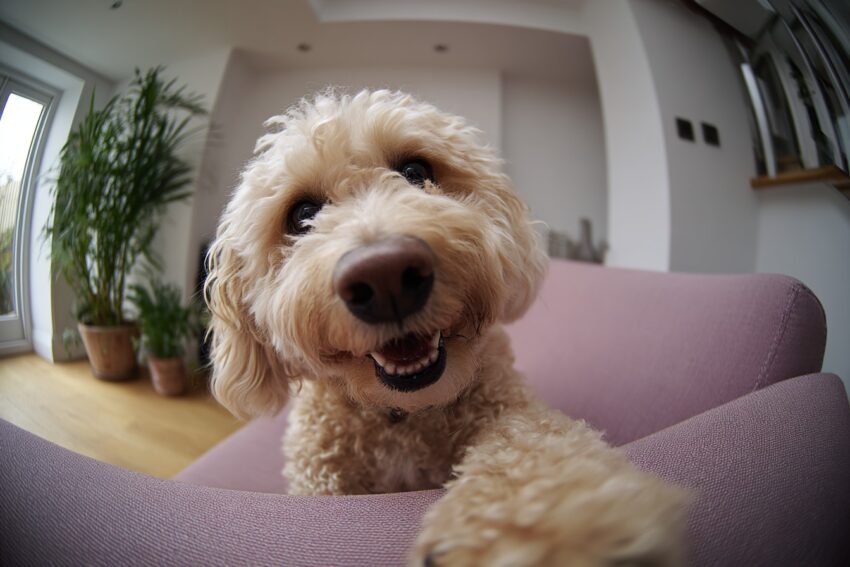
Recognize Signs of Puppy Separation Stress
Some pups adjust easily. Others? Not so much. Separation stress is common—but it’s not always obvious at first.
Being gone all day can trigger everything from mild whining to full-blown panic behavior. The key is knowing what to watch for before it becomes a serious problem.
Common Signs Your Puppy’s Not Coping:
- Non-stop barking or howling right after you leave
- Excessive pacing or panting even in a safe space
- Accidents despite being potty trained
- Chewing or destroying things out of frustration
- Loss of appetite or acting withdrawn when you return
If you notice any of these, don’t panic. It doesn’t mean you’re doing something wrong—it just means your pup needs more support or a slightly different setup.
What helps:
- Calming routines before you leave
- Background noise (like calming dog playlists)
- Gradual desensitization training
- Talking to a certified trainer or behaviorist
Even confident puppies can get overwhelmed. If something feels “off,” trust your gut—and tweak your setup to support their emotional needs.
Puppy Daycare: When to Consider It
Sometimes, the best solution is handing the leash to someone else for the day.
Puppy daycare isn’t just for pampered pooches—it can be a total game-changer for working pet parents, especially in those high-energy puppy months.
What Puppy Daycare Offers:
- Supervised play and socialization
- Regular potty breaks
- Mental stimulation and enrichment
- Nap times and calm-down spaces
- Peace of mind for you
Is It the Right Fit for Your Puppy?
Daycare can be amazing, but it’s not for every pup. Here’s when it makes sense:
- You have a high-energy breed that needs more exercise than a pen allows.
- Your pup shows signs of boredom or anxiety being home alone.
- You can’t get help during the day, and work is intense.
- You want them to learn doggy manners early on.
Just like preschool for toddlers, a good daycare teaches your pup to feel safe, social, and happily worn out by the time you’re done working.
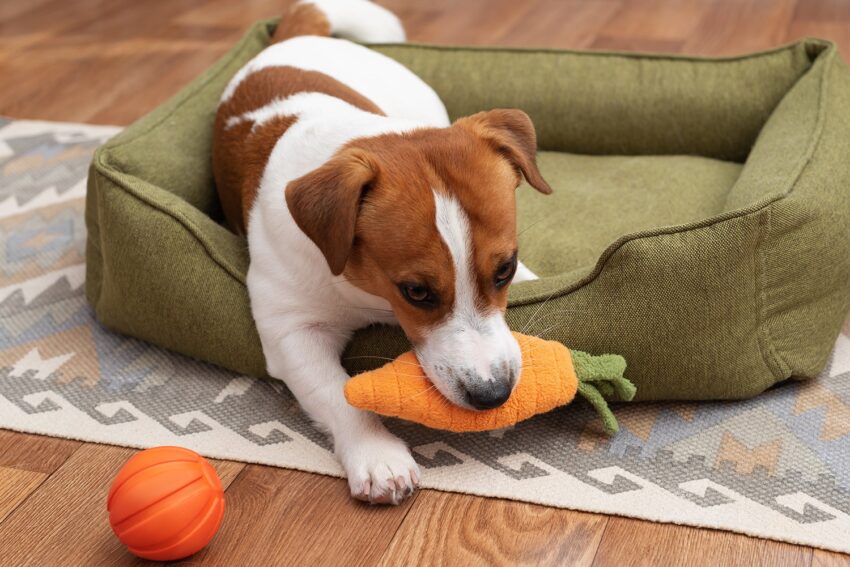
When to Hit Pause on the Puppy Dream
Let’s be honest—sometimes the timing just isn’t right. And that’s okay.
Bringing home a puppy means more than posting cute pics. It means early wake-ups, interrupted sleep, midday potty breaks, and endless consistency.
If your current lifestyle doesn’t allow for that kind of presence, it’s more loving to wait.
When to Pause (For Now):
- You work long hours with no flexible backup.
- You travel often or unpredictably.
- You’re already stretched emotionally or financially.
- You don’t have time for training or socialization in the next 6 months.
What to consider instead:
- Fostering older dogs who already have manners
- Adopting adult or senior dogs—many are housebroken and just want companionship
- Volunteering at a shelter while you plan for the future
Puppies are irresistible. But they’re also intense. Waiting doesn’t make you less of a dog lover—it makes you a wise one.
You’ve Got This
Raising a puppy while working full-time isn’t easy—but it’s definitely doable.
It takes planning. Flexibility. A few messes. And a lot of heart.
But you’re here, reading this, because you care. That alone puts you ahead.
So whether you’re:
- Prepping for your first week
- Rebuilding after a rough start
- Or just wondering if you’re doing it “right”…
Know this: You’re not alone. Thousands of puppy parents are figuring it out just like you—one chew toy, one potty break, one camera check at a time.
Author
-
Hey there, I'm Jamey, and I've been an animal lover for as long as I can remember. Growing up on a 50-acre farm in Ontario, Canada, I was surrounded by a menagerie of furry friends, from beloved cats and dogs to goats, horses, cows, and even chickens. Now, I call Victoria, British Columbia my home, and my heart belongs to my adorable Balinese cat, Milo. When I'm not editing blog posts here at DogVills, I enjoy helping solo entrepreneurs with their passion projects and online marketing. Over the years, I've also ventured into creating and selling various blogs.
View all posts
